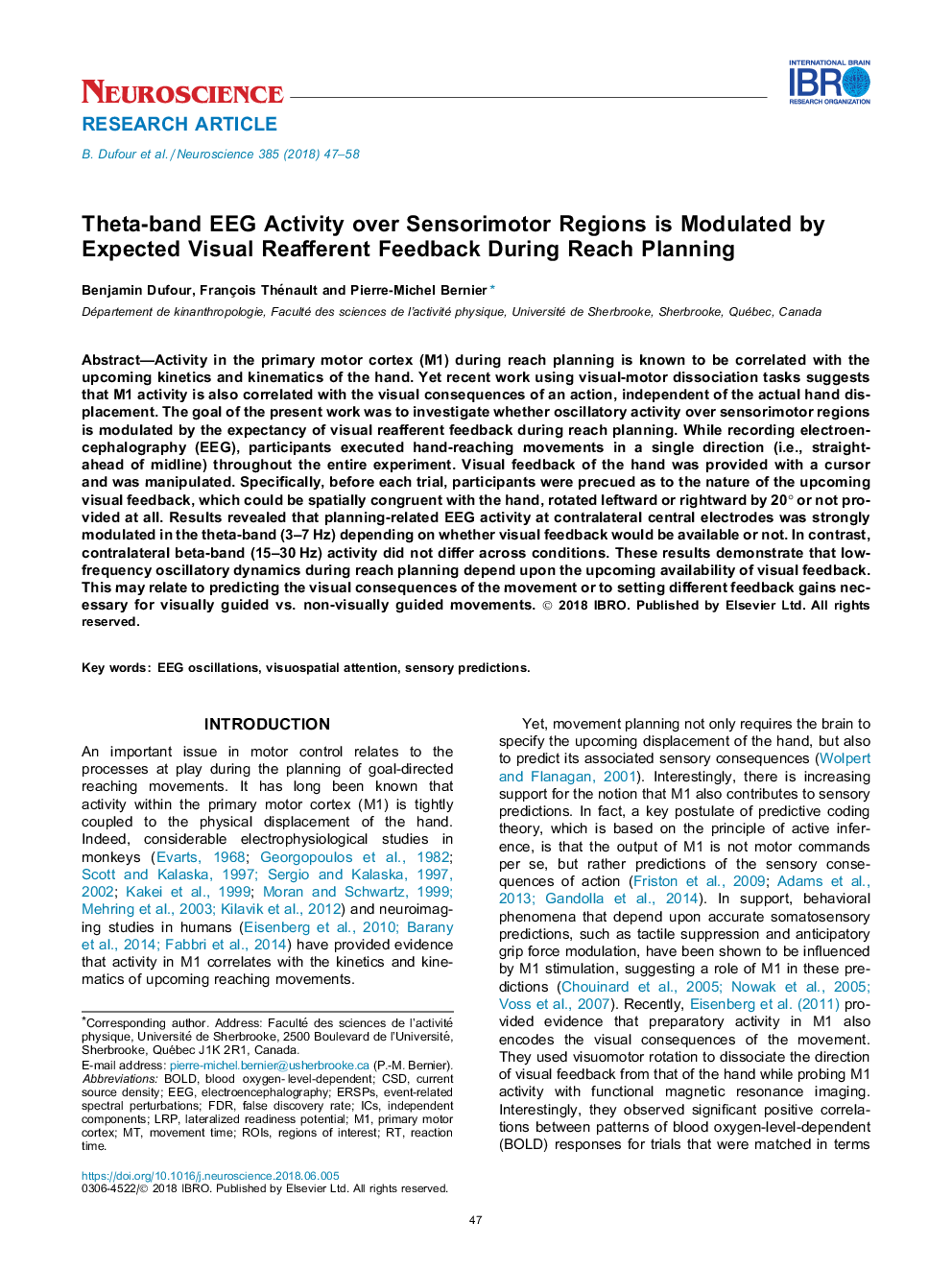| Article ID | Journal | Published Year | Pages | File Type |
|---|---|---|---|---|
| 8840583 | Neuroscience | 2018 | 12 Pages |
Abstract
Activity in the primary motor cortex (M1) during reach planning is known to be correlated with the upcoming kinetics and kinematics of the hand. Yet recent work using visual-motor dissociation tasks suggests that M1 activity is also correlated with the visual consequences of an action, independent of the actual hand displacement. The goal of the present work was to investigate whether oscillatory activity over sensorimotor regions is modulated by the expectancy of visual reafferent feedback during reach planning. While recording electroencephalography (EEG), participants executed hand-reaching movements in a single direction (i.e., straight-ahead of midline) throughout the entire experiment. Visual feedback of the hand was provided with a cursor and was manipulated. Specifically, before each trial, participants were precued as to the nature of the upcoming visual feedback, which could be spatially congruent with the hand, rotated leftward or rightward by 20° or not provided at all. Results revealed that planning-related EEG activity at contralateral central electrodes was strongly modulated in the theta-band (3-7â¯Hz) depending on whether visual feedback would be available or not. In contrast, contralateral beta-band (15-30â¯Hz) activity did not differ across conditions. These results demonstrate that low-frequency oscillatory dynamics during reach planning depend upon the upcoming availability of visual feedback. This may relate to predicting the visual consequences of the movement or to setting different feedback gains necessary for visually guided vs. non-visually guided movements.
Keywords
Related Topics
Life Sciences
Neuroscience
Neuroscience (General)
Authors
Benjamin Dufour, François Thénault, Pierre-Michel Bernier,
